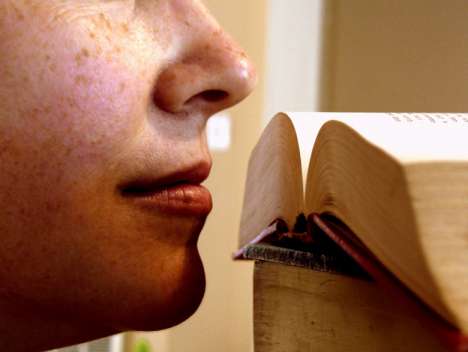Reading on an iPod Touch was OK, especially since the device was small and easy to carry around. Reading on a 1st Generation iPad was more cumbersome, since the tablet is large and comparatively heavy. It is also quite bright if the screen is turned up, but when the brightness is lowered, it is much harder to use. The irritation of having a bright screen shining in my face at close range made reading for extended periods of time rather uncomfortable. Still, I liked the various features the Kindle app provided - the ability to "whispersync" your place in an eBook across multiple devices, and of course, the ability to instantly buy and download a new book. It did not take long for me to see the many benefits in eBook technology.
 |
| My 2011 Kindle (left) and 2013 Kindle Paperwhite (right) |
Shortly after publishing my first pieces of short fiction in 2011, I decided it was time to get a Kindle. I bought it in December of 2011, and was immediately impressed. While the keyboard might make it a little intimidating or "retro" at first, and the e-ink contrast isn't as sharp as later models, I immediately found the e-ink technology extremely comfortable to read. There was no light shining directly into my face, the side buttons turning the page allowed one to keep reading with a brief twitch of my thumb, and the ability to adjust font size, line spacing, and character density made reading very easy on my eyes, which is especially important for me, as my eyesight isn't great, and paperback fonts tend to be small and cramped.
A little more than a year later, I did buy a 7" Samsung tablet, and while it was so much better to read on than my tiny smartphone or the large, cumbersome iPad, it still shined a bright light in my face, and once I purchased a larger LG smartphone, I found the tablet redundant. A few months later, addressing the one major flaw in my Kindle (the lack of a reading light), I bought a Kindle Paperwhite in 2013. While I missed the buttons - and it was harder to take notes with the touch keyboard vs the actual physical button keyboard - the Paperwhite was smaller, lighter, and the adjustable light, which shown across the page, rather than out from behind it, made reading in low light extremely easy.
 |
| Way to be an elitist shitbag! |
And of course, there's the "I just love books" argument. People love the feel of a book, the smell of paper, the act of turning pages, blah blah blah. Look, no one is forcing a Kindle into your hands and dragging your books out of your house to throw into the back of a dump truck. Contrary to popular opinion, Marie Kondo isn't telling you to ONLY keep 30 books in your house (I have her book - in paper no less - and she says no such thing). For some reason, people seem to think that proponents of eBooks live some weird minimalist, digital-only lifestyle. I own two e-readers, and I've got sixteen bookcases filled to the damn brim with books. There's books everywhere you turn in my home, and you know what - that's one of the reasons I like the Kindle. I don't have to go digging through piles and bookcases looking for a book, it's right there in the Kindle inventory. I don't need to worry about packing "backup" books when I go on a trip, because I've already got several hundred right there with me.
 |
| Mmmm, smells like mold, cigarette smoke, and cat piss. |
In conclusion, eBooks and the e-reader have completely changed the way I buy and read books, making it a much more immediate experience. I still buy used, vintage paperbacks for my collections, and I still buy paper books for research because it is easier to find a specific page or diagram in a paper book, but for casual, leisure reading, it's almost exclusively done via eBooks.





0 Yorumlar